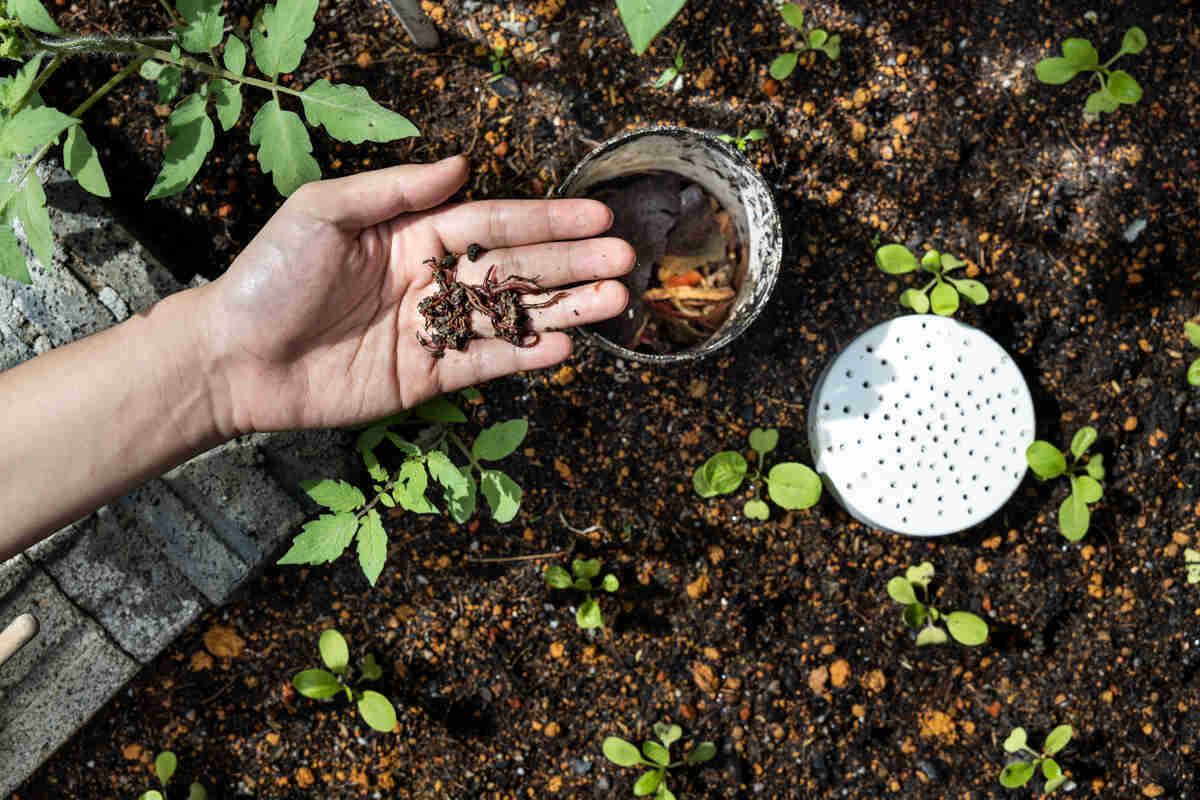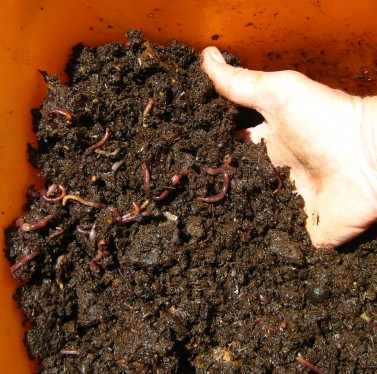Innovative Methods in Red Wiggler Composting to Improve Your Fertilizer
Innovative Methods in Red Wiggler Composting to Improve Your Fertilizer
Blog Article
Comprehending the Advantages of Red Wiggler Composting: Just How This Efficient Approach Changes Organic Waste Into Nutrient-Rich Dirt Modifications
Red Wiggler composting, using the varieties Eisenia fetida, presents a compelling strategy to natural waste monitoring, transforming kitchen scraps and yard debris into useful dirt modifications. This approach not just enhances soil fertility yet also addresses pushing environmental concerns, consisting of landfill waste reduction and greenhouse gas exhausts.
What Are Red Wigglers?
Red wigglers, clinically called Eisenia fetida, are a types of earthworm that play a pivotal role in vermicomposting systems. These worms are identified by their reddish-brown color, segmented bodies, and a distinctive ability to grow in organic-rich environments, making them optimal for composting applications - Red Wiggler Composting. Unlike their garden-dwelling equivalents, red wigglers favor to live in the top layers of dirt, where rotting issue is abundant
Normally determining between 3 to 4 inches in length, red wigglers have a high reproductive price, enabling them to multiply rapidly under optimum conditions. They have a distinct digestion system that permits them to process natural waste effectively, transforming it into nutrient-rich spreadings, which are highly advantageous for plant development.
Their resistance to differing moisture degrees and temperature varies better improves their energy in vermicomposting setups, making them a popular option amongst composting lovers. Additionally, red wigglers are cardio organisms, which demands a well-aerated composting environment, making certain efficient disintegration. Comprehending the biological qualities and behaviors of red wigglers is necessary for optimizing their usage in sustainable waste administration techniques.

Advantages of Vermicomposting
Utilizing the power of vermicomposting deals a multitude of environmental and farming advantages. To start with, it considerably lowers organic waste in garbage dumps, consequently minimizing methane emissions, a powerful greenhouse gas. By drawing away food scraps and backyard waste to vermicomposting, we sustain a more lasting waste monitoring system.
In addition, vermicomposting improves dirt health. The castings generated by red wigglers are abundant in important nutrients, microorganisms, and enzymes, enhancing dirt framework and fertility. This nutrient-rich modification advertises durable plant development and increases water retention, decreasing the need for chemical fertilizers.
Furthermore, vermicomposting fosters biodiversity in the soil environment. The intro of helpful microbes from worm spreadings help in illness reductions and nutrient biking, developing a much healthier atmosphere for plants.
Financially, vermicomposting minimizes the expenses connected with chemical inputs and waste disposal. Gardeners and farmers can grow high-quality fruit and vegetables at reduced expenditures, adding to food safety and sustainability.
Exactly How to Start Composting
Starting a composting endeavor can be a fulfilling and uncomplicated process. To begin, pick an appropriate place that is well-drained and receives partial sunshine. This will certainly assist maintain a well balanced temperature level, important for the composting process. Next off, select a compost container or produce a designated area in your garden, guaranteeing it is quickly available for adding products and harvesting garden compost.
Collect organic products such as kitchen scraps, yard waste, and shredded paper. Go Visit Your URL for a balanced mix of 'environment-friendly' materials, high in nitrogen (e.g., fruit scraps, coffee premises), and 'brown' products, rich in carbon (e.g., dried leaves, cardboard) A proportion of roughly 2:1 environment-friendly to brown products is perfect.
Beginning layering your materials, making sure adequate air flow by transforming the pile consistently. This promotes cardiovascular decomposition, speeding up and decreasing odors up the procedure. Monitor wetness degrees; the compost must really feel like a wet sponge but not excessively damp.
Nutrient Account of Vermicompost
Composting, particularly with red wigglers, produces a nutrient-rich item referred to as vermicompost. This natural modification is distinguished by its high concentration Learn More Here of essential nutrients, making it an indispensable source for horticulture and agriculture. Vermicompost typically has elevated levels of macronutrients such as potassium, phosphorus, and nitrogen, which are critical for plant growth. Additionally, it offers micronutrients like iron, calcium, and magnesium, cultivating durable plant growth and enhancing dirt wellness.
The microbial activity present in vermicompost further improves its account, presenting useful germs and fungi that advertise nutrient schedule and uptake in plants. This biological component help in subduing plant diseases and boosting dirt structure, leading to enhanced water retention and oygenation.

Environmental Influence of Composting
The environmental influence of composting, particularly with the use of red wigglers, is diverse and extensive. This method substantially decreases the quantity of natural waste sent to land fills, which in turn minimizes greenhouse gas exhausts, especially methane-- a powerful factor to climate modification. By drawing away organic materials from land fills, red wiggler composting not just helps alleviate ecological destruction however additionally advertises sustainable waste administration methods.

In addition, composting adds to carbon sequestration, as the procedure captures co2 from the ambience and shops it in the soil. This all-natural procedure aids in combating climate adjustment while improving the dirt - Red Wiggler Composting. On the whole, red wiggler composting offers a sensible, eco-friendly solution for waste management and ecological sustainability, advertising much healthier environments and a much more sustainable future
Conclusion
In final thought, Red Wiggler composting offers as an efficient method for transforming organic waste right into valuable dirt amendments. The procedure not just enhances soil fertility and framework however also alleviates environmental problems linked with waste disposal.
Red Wiggler composting, utilizing the varieties Eisenia fetida, provides an engaging method to natural waste management, transforming kitchen scraps and yard particles into beneficial soil modifications. Unlike their garden-dwelling counterparts, red wigglers choose to live in the upper layers of soil, where rotting issue is abundant.
The spreadings produced by red wigglers are abundant in essential nutrients, microbes, and enzymes, enhancing dirt structure and fertility. The nutrient-rich by-products of red wiggler task boost soil structure, boost water retention, and advertise biodiversity within the soil environment.In verdict, Red Wiggler composting serves as an efficient approach for converting natural waste right into valuable dirt amendments.
Report this page